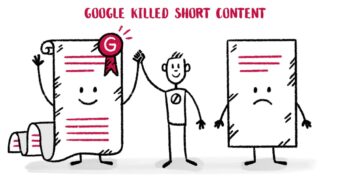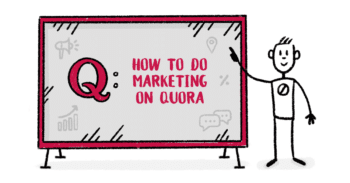8 “Beyond Blog Post” Content Marketing Ideas

When most people think about the term “content marketing,” the first thing they think of is a blog post.
Specifically, they’re likely picturing a blog post that’s an engaging topic their audience will like, around 1500-2000 words, with a few visuals and some backlinks included.
You’re not alone. And as a content marketer, I’m a huge fan of the content I just described. Blog posts are highly effective when created consistently, written well, and executed strategically… but they’re also not the only type of content marketing you should consider.
So in this post, we’ll talk about what we’ll call “beyond blog post” content marketing ideas that can expand your content horizons to engage your audience in new ways and increase your results tenfold.
Why Your Content Should Go Beyond “Good Idea” Blog Posts
When I start working with new clients, the first thing I do is take a look at their existing content and their content strategy.
In almost 90% of cases, most of what I find is what I call a long library of “good idea” blog posts. These are singular blog posts that were written after a marketer thought “this would be interesting for our readers,” conducted basic keyword research, and put the post together.
There’s always a place for “good idea” blog posts in any strategy; sometimes, these posts have some of the highest engagement or share rates, even if they aren’t particularly SEO-friendly.
But you don’t want to rely exclusively on this type of content for a few reasons:
- Eventually, you start to run out of ideas, especially if you’re posting content at scale
- Some good ideas don’t necessarily fit into a keyword strategy, link-building strategy, or SEO strategy
- Most importantly: You’re leaving a lot of room for growth, engagement, and sales on the table if your only focus is here instead of on adding additional high-engagement content to your strategy
8 “Beyond Blog Post” Content Marketing Ideas for SaaS Brands
So what types of content marketing ideas should SaaS brands consider that go beyond your standard blog posts?
That’s a great question. And the answer will depend entirely on your existing audience base and your strategy, but we’ve got a list of eight different “beyond blog post” content marketing ideas that will shake things up (and drive results!).
1. Ultimate Guides & Content Hubs
First up, we’ve got ultimate guides and content hubs.
This content can take a few different forms. You may have a section on your site titled something like “Ultimate Guides,” which feature blog posts anywhere from 2,000-15,000 words long, diving into a specific topic in extreme detail.
You can see examples of extended guides at AdEspresso:

More brands are also creating “Content Hubs,” which will feature more interactive “hubs” of content that essentially break down an ultimate guide into different sub-topics all in one place. This strategy allows you to create highly-targeted individual pages for different keywords and allow for more external backlinking and internal linking opportunities.
A great example of this is the Google Ads Guides available from Grow My Ads, which are designed using that “hub” model, breaking down multiple different ad types into individual resources.
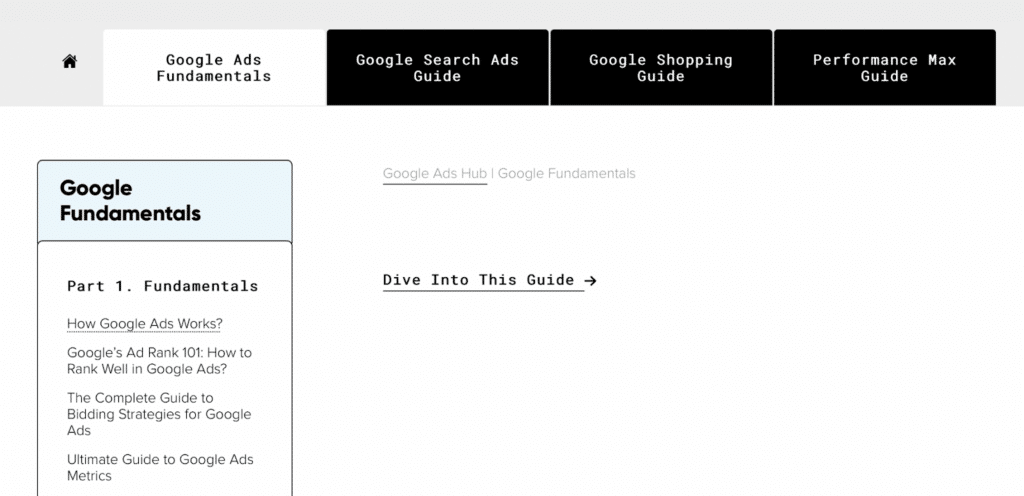
When to Use This Content Marketing Idea
Ultimate Guides and Hub Content are outstanding choices for all SaaS brands. Think about the most high-value topics that users often search for and need to understand in your industry, and start there.
Examples may include:
- A payroll SaaS company might create a Hub around tax law for businesses with resources broken down by location, industry type, or corporation type
- Communication software might have an “ultimate guide” about facilitating cross-department teamwork
2. Pillar Posts & Topic Clusters
If you’re familiar with content marketing, you’ve likely heard the terms “pillar posts” and “topic clusters” before. They offer great ways to generate more content marketing ideas that will eventually rank well in the SERPs.
Topic clusters involve conducting keyword research and finding individual topics and keywords that relate to others in a similar category.
So a project management company might have a topic cluster around the primary keyword “small business project management.”
They’ll then have additional topics and keywords like “business project management mistakes to avoid,” “best project management software for small business,” and “project management best practices.”
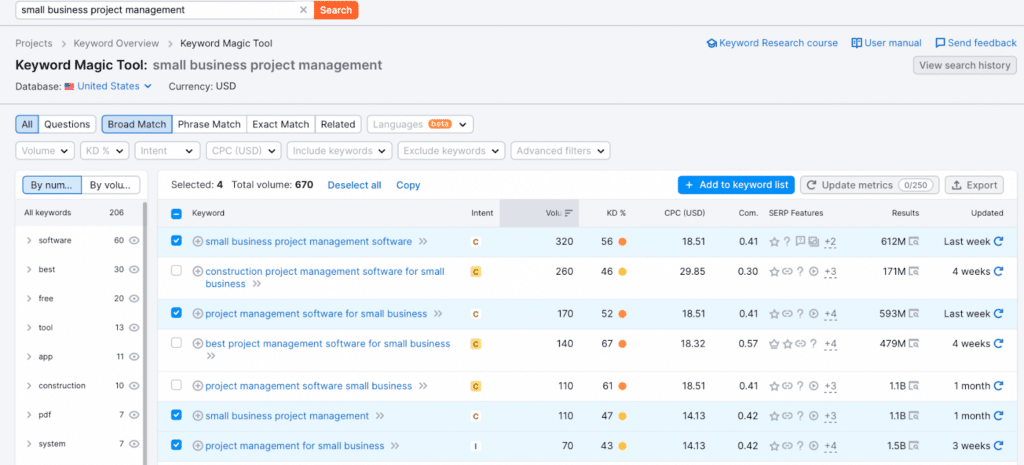
The primary keyword— and the core topic— will get a pillar post. This post will be a little like an ultimate guide, ranging in length from around 2,000-5,000 words. It will be extraordinarily in-depth and ideally will mention most of the “sub-topics” within the cluster.
All of the other topics in the cluster get their own individual posts, often ranging from 1,000-2,000 words (again, depending on how much content is needed to answer the user’s search query thoroughly).
The posts within the topic cluster will all link to each other and to the pillar post and vice versa.
When to Use This Content Marketing Idea
I typically recommend that most SaaS brands at least incorporate the pillar post and topic cluster strategy into their process. It’s an outstanding way to make sure that you’re thoroughly covering each topic that’s important to your business, and it sets up a solid foundation for backlinking.
3. Glossaries
I know so far we’ve talked about content ranging from 1,000-15,000 words in length… but long content doesn’t necessarily mean good content. It’s just important to create resources that answer the users needs.
That’s where glossaries come in. More brands are adopting “glossaries” as resources on their sites, where they create a dedicated section where they define common terms, practices, or strategies in their industry.
Robinhood uses this strategy, which is particularly valuable given the complexity of their industries (crypto, finance, and investing).
They have a library of glossary-style content, all with headlines like “what is depreciation.” The content answers the question in a paragraph or two, gives an example, and has a takeaway. Most of the content will feature more information below with featured-snippet style questions and answers, but they keep the definition simple and easy to understand.

When to Use This Content Marketing Idea
If you work in an industry with a large number of complex terms that may be foreign to some customers, a glossary is an outstanding choice.
Brands working in finance or payroll industries, for example, could benefit from this strategy, as could those working with complex marketing software. A project management software company, however, may not have as many terms to define.
4. Galleries
Galleries are a personal-favorite here at DivByZero. The idea is that you’ll create an extensive gallery of different examples that your audience would find useful.
At AdEspresso, the team created an entire gallery of Facebook Ads before the Facebook Ads Library was ever a thing. And on our site here, we now have the SaaS Examples Gallery, which features amazing examples of SaaS marketing (including landing pages, email workflow, ads, and more). Sort the examples by company, industry, or page type as you see fit.
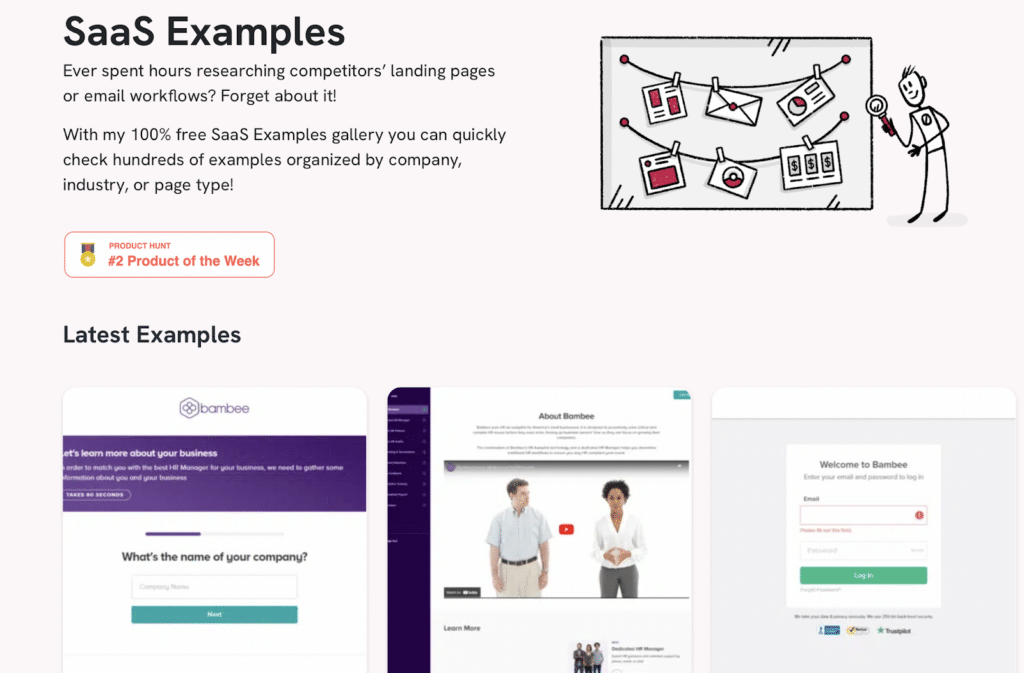
When to Use This Content Marketing Idea
Galleries are an outstanding strategy if you have the time and energy available to put them together. You’ll need to hunt down a thorough list of whatever it is you’re featuring that’s thorough enough to keep users engaged, and you’ll ideally want to make sure that it’s either totally evergreen or updated often enough to stay relevant.
And if you don’t have a gallery of examples you can create, consider creating a gallery of templates. An email marketing company may prefer to offer an entire gallery of downloadable templates that brands can use to create stronger copy, for example.
5. Interactive Content
Looking for content marketing ideas that will spice up your standard blog posts?
Consider how you can make your posts (or other types of content) more interactive. Examples could include:
- Updates with real-time data
- Data visualization
- Free tools, like a free CLV calculator, aren’t hidden behind a paywall and give users exactly what they need
You’ll see less interactive content online because it requires more technical knowledge (and time) to set up. That being said, this kind of interactivity can send engagement and overall value sky-high.
If you’re looking for an example, take a look at this 9 Basic Principles of the Design blog post. It uses GIFs instead of static images to showcase different design elements.
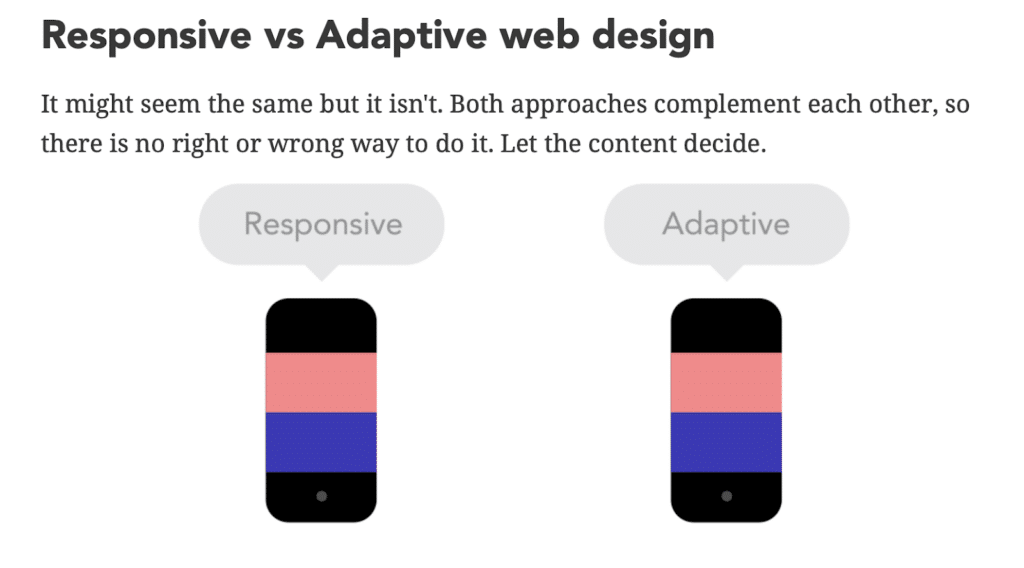
When to Use This Content Marketing Idea
If you ever have a chance to add dynamic or interactive elements to your content— especially high-value content— you should. It will take extra preparation, so account for that in your publishing schedule, but working with an excellent developer or coder can help.
6. Templates
We’ve mentioned templates already in the gallery section, but they really deserve their own section.
No matter what type of software your brand has created, we can almost guarantee there’s some industry-relevant template your audience would download in a heartbeat (even if it means leaving their email in order to do so!).
Zapier, for example, offers automation software for businesses of all sizes. I shared my client database template in a post, which readers could copy through Google Docs.
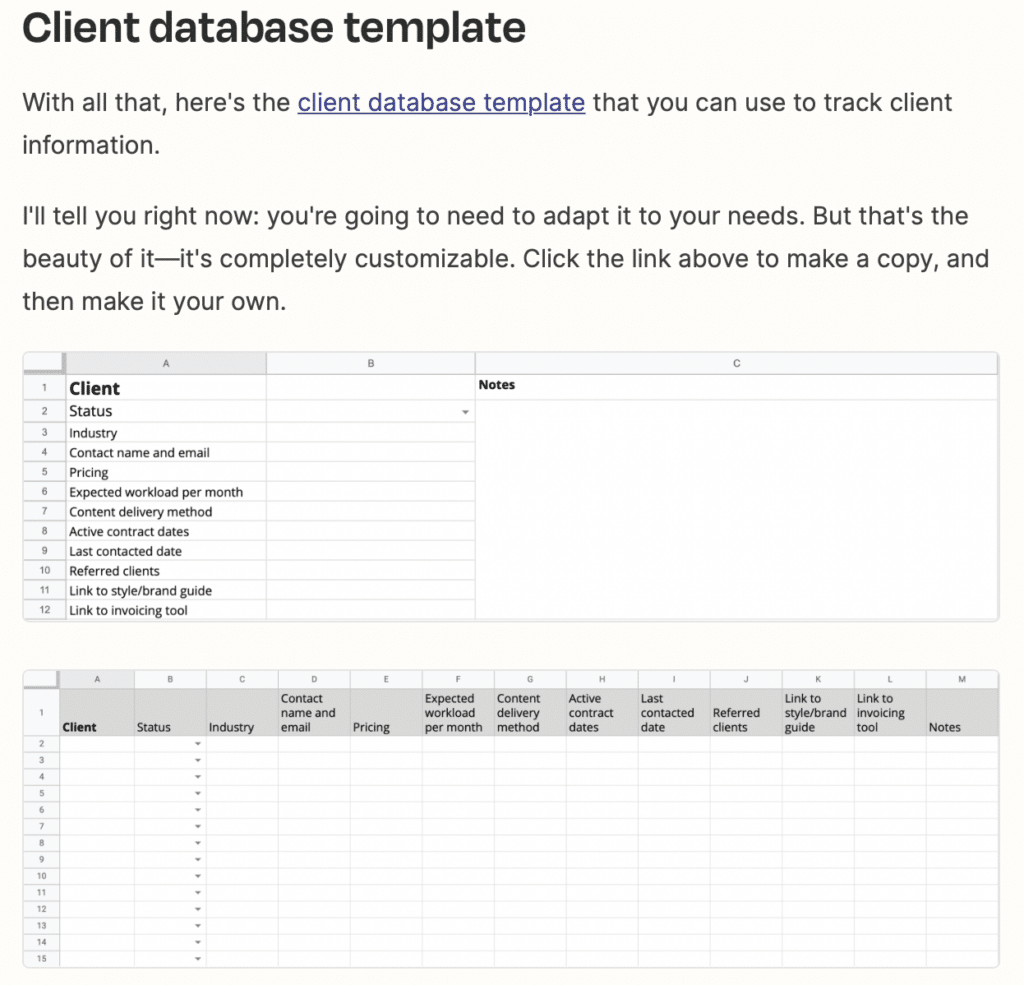
When to Use This Content Marketing Idea
Whether you link to templates in blog posts and have them accessible for free in a Google Doc for readers to copy, or you have them as a PDF download behind a lead form, there are plenty of options here for including them in your strategy.
You can include templates for forms (which might be used for social media audits) or templates that can be used for something like copywriting, image design, or email text. The sky is the limit.
7. Case Studies
Case studies are a must-have for SaaS businesses. The SaaS industry is oversaturated, and competition is fierce. No matter what type of software you offer, there are likely a few direct and indirect competitors out there ready to snag some of your customers.
Case studies can help you stand out, and can help you show that you can deliver what you’re promising. They’re an incredibly useful type of content for your sales team, too, as they can demonstrate high-success results in a story-based format.
Project management software monday.com has a “success stories” tab on their site where they list case studies from real clients. And take note of how they mention their client’s name and the specific results they achieved by using the platform— that’s a great format to follow.

When to Use This Content Marketing Idea
Case studies are valuable for all SaaS brands. Have them in a dedicated place on your site, and remember that you can include case studies in relevant and high-intent blog posts targeting the mid- or late-funnel end goal of driving demos or free trials.
8. Webinars & Video Events
It’s not just about written and downloadable content— video opens a ton of new doors for content marketing ideas. It’s a new format, making it easier to share certain types of information, and plenty of users prefer watching videos over reading a post.
Webinars are a great example. You can walk users through a specific process in a webinar, or go over core information that they need to know.
You can also host video events that aren’t technically a webinar but still offers value. Breadcrumbs’ Hot Takes Live series, for example, will interview dozens of the top SaaS leaders in sales, marketing, and RevOps to learn more about their controversial “hot takes” and how to put them in practice. Users can attend live, watch the replays after, or even view them on YouTube (which also acts as a content discovery platform).

When to Use This Content Marketing Idea
As more users engage with SaaS brands through video, we recommend considering it. Even if you want to have basic tutorials on a dedicated YouTube channel or host bi-annual webinars, that’s a start. And remember that you can always embed videos into your standard blog posts, too!
Final Thoughts
When it comes to content marketing, it’s good to think outside of the box. That’s true for “good idea blog posts” when it comes to creating examples or finding additional sections to add to the post, but it goes for your strategy overall, too.
And remember the following:
- A strategy is essential; as long as you’re guided by a strategy that offers value to your target audience, you’re off to a good start
- Long doesn’t mean good; we can’t stress this enough, and Google does not require you to have blog posts of 2k words or more to rank well
- Diverse content types are often key to long-term success
So, which types of “beyond blog post” content marketing ideas are you going to include in your strategy? Make sure you let us know in the comments below!

